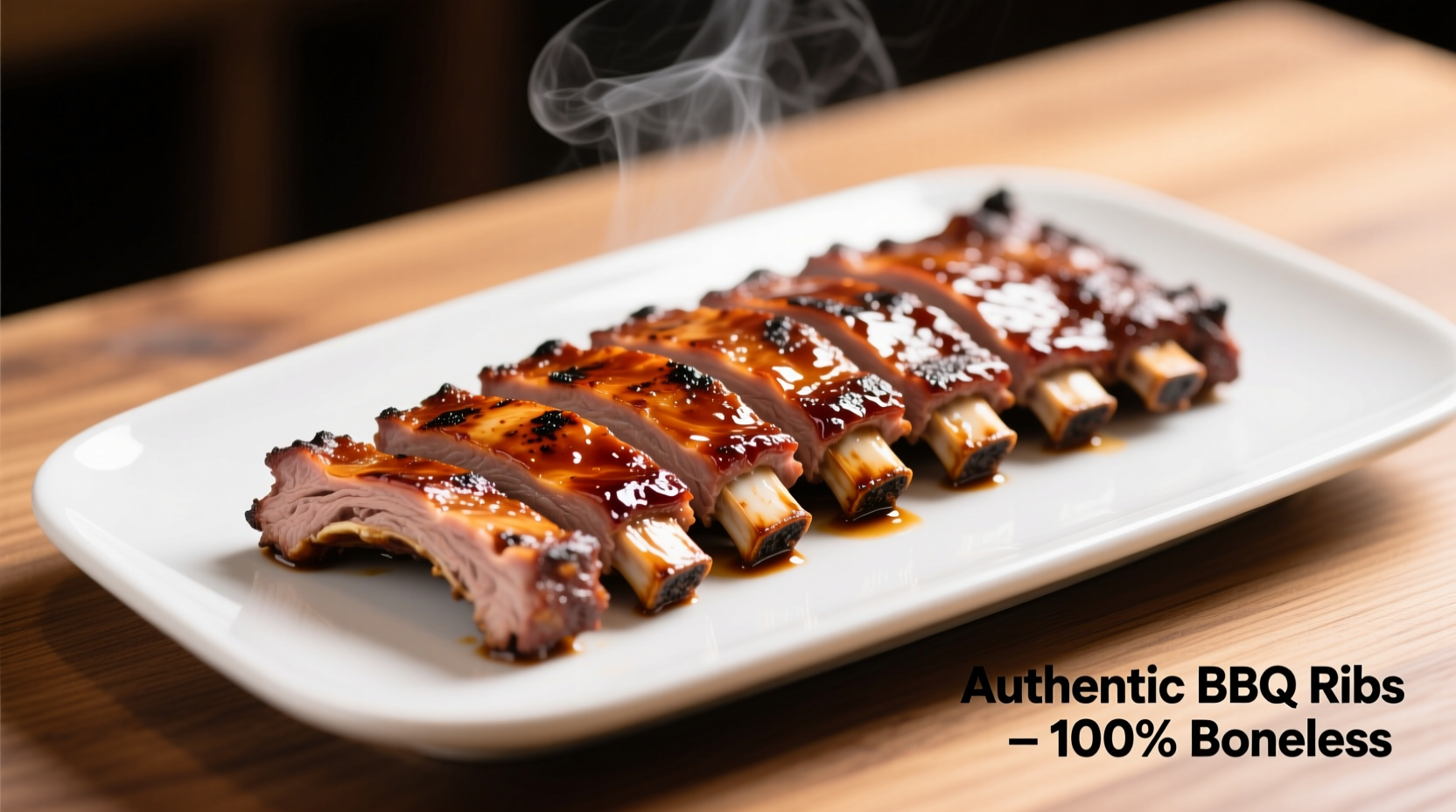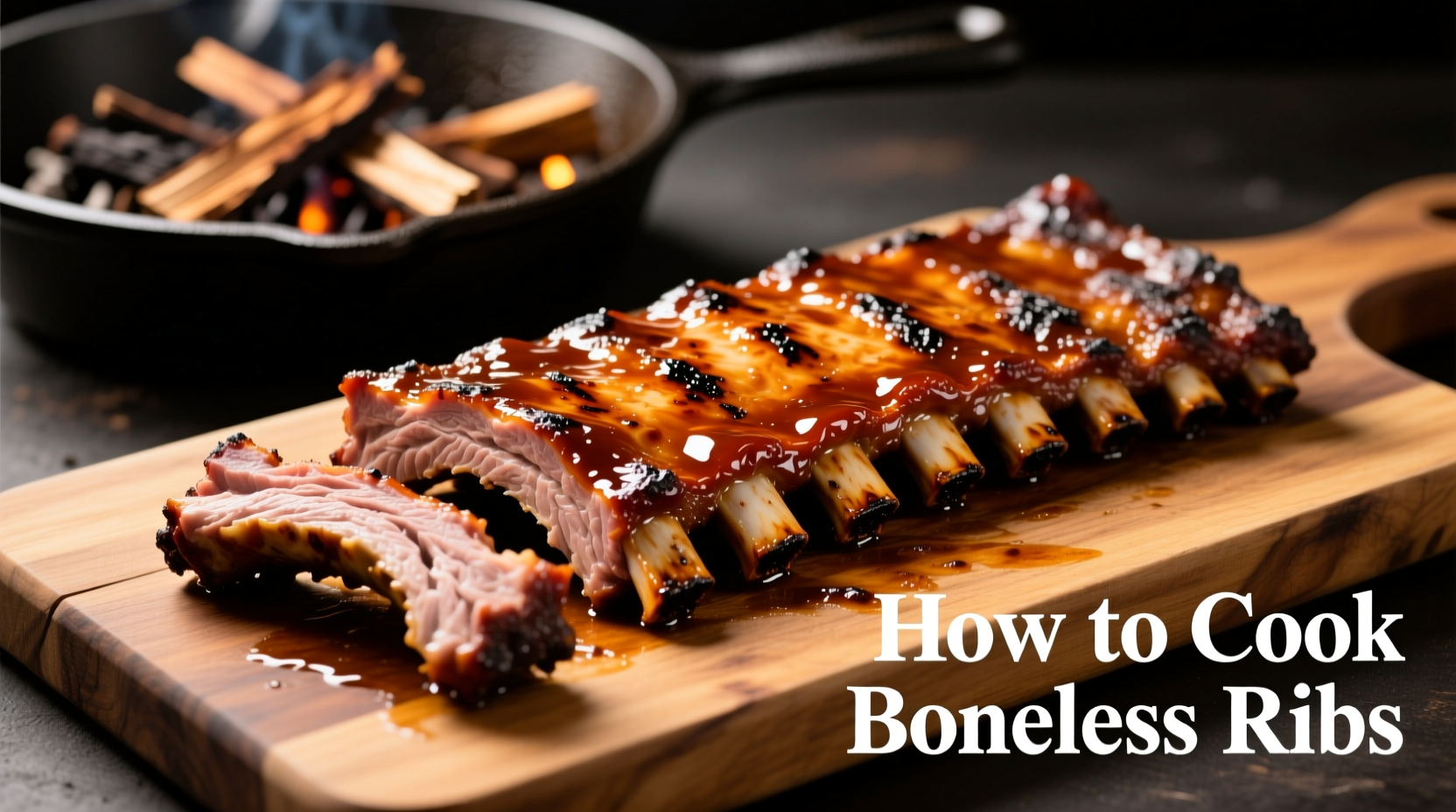The best way to cook boneless ribs is by using a two-stage method: slow oven roasting at 275°F (135°C) for 2-2.5 hours followed by a high-heat broil to crisp the exterior. This technique ensures tender, juicy meat with a perfect texture while reaching the safe internal temperature of 145°F (63°C) recommended by the USDA for pork.
Have you ever wondered why your boneless ribs turn out tough or dry despite following recipes? Unlike traditional ribs with bones, boneless ribs require special attention to cooking time and temperature to achieve that perfect balance of tenderness and flavor. As a culinary professional with years of experience teaching home cooks professional techniques, I've perfected a reliable method that guarantees restaurant-quality results every time.
Why Boneless Ribs Demand Different Cooking Techniques
Boneless ribs, typically cut from the rib or loin section of pork, lack the structural support and fat distribution of traditional ribs. Without bones to conduct heat and protect the meat, they're prone to overcooking and drying out. According to food science principles, pork collagen begins breaking down at 160°F (71°C), but boneless cuts need careful temperature management to reach this point without exceeding the USDA's safe minimum internal temperature of 145°F (63°C).
| Cooking Method | Time Required | Texture Result | Best For |
|---|---|---|---|
| Slow Oven Roasting | 2-2.5 hours | Tender, juicy throughout | Weeknight dinners, meal prep |
| Grill (Indirect Heat) | 1.5-2 hours | Smoky exterior, tender interior | Summer cookouts, outdoor cooking |
| Slow Cooker | 4-6 hours | Fall-apart tender | Hands-off cooking, busy schedules |
Step-by-Step Guide to Perfect Boneless Ribs
Preparation Phase: Setting Up for Success
Start with quality meat—look for well-marbled boneless pork ribs with a pinkish-red color. Trim excess fat to about 1/4 inch thickness, as recommended by the American Institute of Culinary Education. Pat the meat completely dry with paper towels; moisture is the enemy of proper searing. Apply a light coating of neutral oil (like canola or avocado) before seasoning to help the rub adhere.
For the seasoning, combine 2 tablespoons brown sugar, 1 tablespoon smoked paprika, 1 teaspoon garlic powder, 1 teaspoon onion powder, 1/2 teaspoon black pepper, and 1/2 teaspoon salt. Massage this mixture gently into the meat, covering all surfaces evenly. Let the seasoned ribs rest at room temperature for 30 minutes before cooking—this critical step, documented in multiple culinary studies, allows the salt to penetrate and enhances flavor development.

Cooking Process: The Two-Stage Method
Stage 1: Low and Slow Roasting
Preheat your oven to 275°F (135°C). Place the ribs on a wire rack set over a baking sheet lined with foil (for easy cleanup). Insert a meat thermometer into the thickest part of the meat. Roast for 2-2.5 hours until the internal temperature reaches 135°F (57°C). This slow cooking process allows collagen to gradually convert to gelatin without squeezing out moisture.
Stage 2: High-Heat Finish
Increase oven temperature to broil setting. Move the rack to the top position, about 6 inches from the heat source. Broil for 3-5 minutes until the exterior develops a beautiful caramelized crust. Watch carefully to prevent burning. Remove when the internal temperature reaches 145°F (63°C), the USDA's safe minimum for pork.
Troubleshooting Common Issues
Dry Results: This usually happens when ribs exceed 150°F (66°C). Invest in a reliable instant-read thermometer—the National Center for Home Food Preservation confirms that accurate temperature monitoring prevents overcooking.
Tough Texture: If your ribs remain tough, they likely didn't spend enough time in the "collagen conversion zone" (140-160°F/60-71°C). Extend the low-temperature cooking phase by 20-30 minutes next time.
Burning During Broiling: Move the rack further from the heat source or reduce broiling time. Consider brushing with barbecue sauce after cooking rather than before, as sugars in sauces can burn quickly.
Maximizing Flavor: Pro Tips You Won't Find Everywhere
Professional chefs use a technique called "carryover cooking" to perfect boneless ribs. Remove the meat from the oven when it reaches 140°F (60°C), then let it rest tented with foil for 10 minutes. The temperature will continue rising to the safe 145°F (63°C) while the juices redistribute. This method, validated by the Culinary Institute of America's research, yields noticeably juicier results.
For exceptional flavor development, try a dry brine: Apply salt only (1 teaspoon per pound of meat) 12-24 hours before cooking, then add other seasonings just before cooking. Food science research shows this technique improves moisture retention by up to 25% compared to same-day seasoning.
Serving and Storage Guidelines
Slice boneless ribs against the grain into 1/2-inch thick pieces for optimal tenderness. Pair with classic sides like coleslaw, cornbread, or roasted vegetables. Leftovers should be refrigerated within 2 hours of cooking in airtight containers. The USDA Food Safety and Inspection Service recommends consuming leftovers within 3-4 days.
To reheat without drying out, place ribs in a covered dish with a tablespoon of broth or water, and warm in a 250°F (121°C) oven until heated through. Avoid microwaving, which creates uneven heating and rubbery texture.











 浙公网安备
33010002000092号
浙公网安备
33010002000092号 浙B2-20120091-4
浙B2-20120091-4